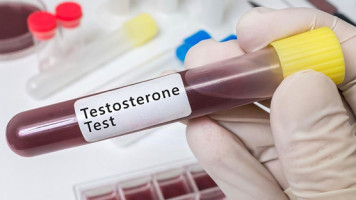What Tests Are Used To Diagnose BPH?
A physical examination, patient history, evaluation of symptoms, laboratory tests, and other tests provide the basis for a diagnosis of benign prostatic hyperplasia (BPH). The physical examination includes a digital rectal examination (DRE), and symptom evaluation is obtained from the results of the AUA Symptom Index. The following tests are sometimes used to diagnose BPH, but not all of them are always necessary. Your doctor will discuss with you which of these might be helpful in your case.
Digital Rectal Exam (DRE)
The Digital Rectal Examination (DRE) is one of the standard tests used to diagnose BPH. During this test, a urologist inserts a gloved finger into the rectum to check your prostate for enlargement and abnormalities.
PSA Test
This blood test measures a protein produced by the cells of the prostate gland. It is always done and evaluated in conjunction with a DRE.
Urinalysis
A urinalysis is another one of the routine tests used to diagnose BPH as part of a physical examination. It involves collecting a urine sample in a cup from the patient and then examining the sample under a microscope.
Cystoscopy
A lighted, flexible cystoscope is inserted into your urethra, allowing your doctor to view the inside of your urethra and bladder. A Cystoscopy is usually performed just before prostate surgery to guide the surgeon in performing the procedure or to look for abnormalities of the urethra or bladder.
Uroflowmetry
In this noninvasive test, a man urinates into an electronic device that measures the speed of his urine flow. A slow flow rate suggests an obstruction of the urethra. If the flow rate is high, urethral obstruction is unlikely, and therapy for BPH will not be effective in most instances. A normal urine flow rate is 15 mL per second or higher.
Filling Cystometry
This test involves filling the bladder with fluid and measuring how much pressure builds up and how full the bladder is when the urge to urinate occurs. It is recommended for evaluating bladder function only in men who have a prior history of urological disease or neurological problems that could be affecting bladder function.
Ultrasound
An Ultrasound uses sound waves to check the size and structure of the kidneys, bladder, and prostate. A small device called a transducer is inserted into the rectum (transrectal ultrasound) to visualize and evaluate the prostate.
A few, if not all, of the tests above may be performed based on the information that you provide your doctor. Remember that BPH is a common condition, but many of the symptoms of BPH can also be shared with other, more insidious diseases such as prostate cancer. Be sure to visit your doctor if you experience any symptoms of BPH to ensure a proper diagnosis and a suitable course of treatment.






